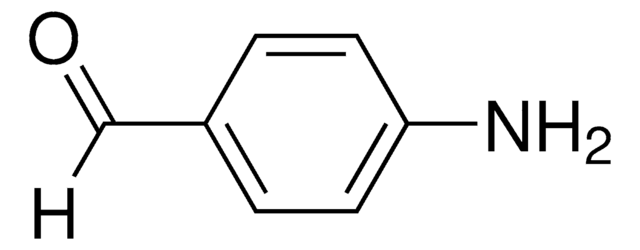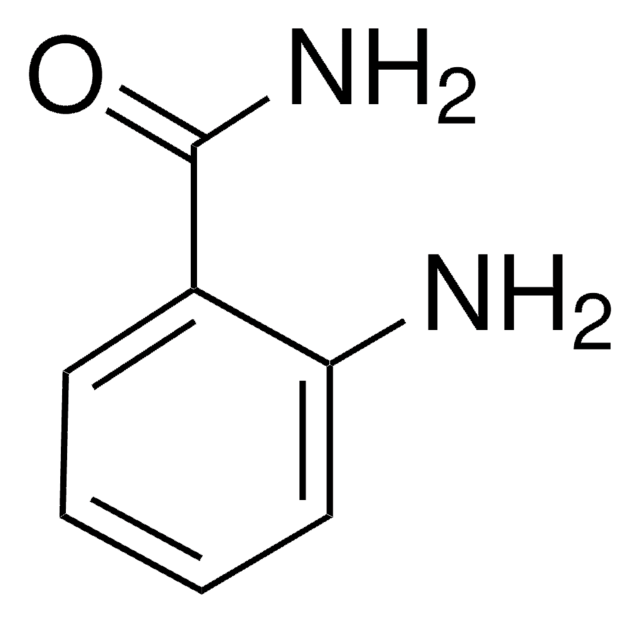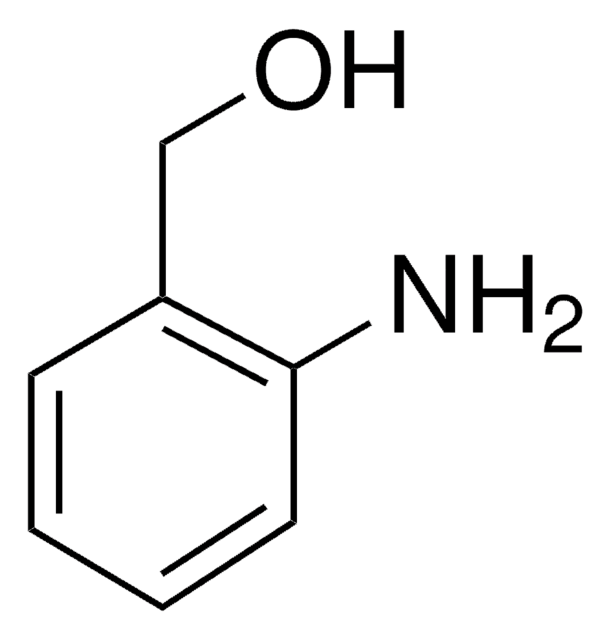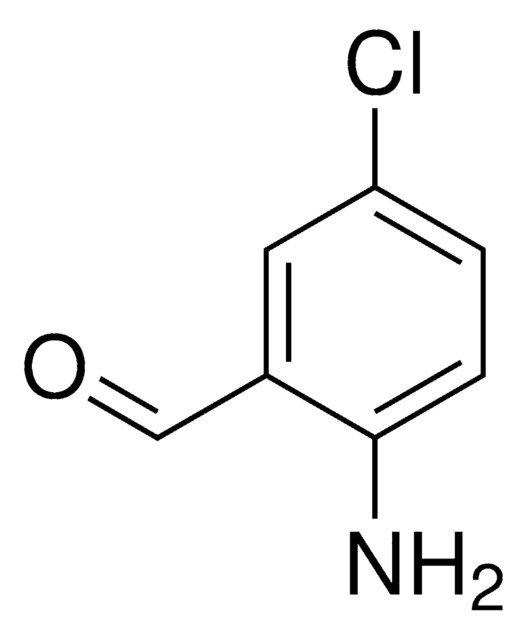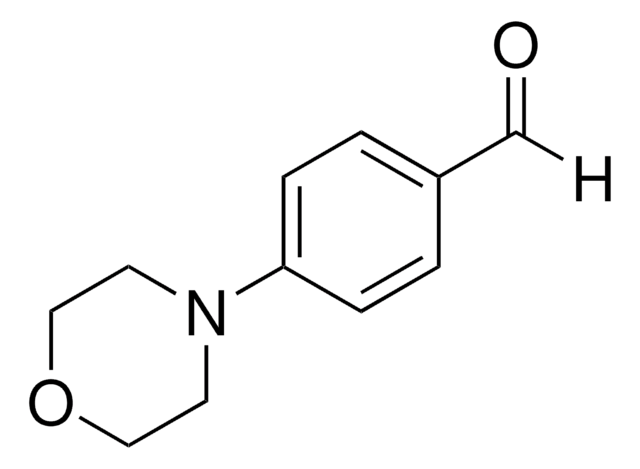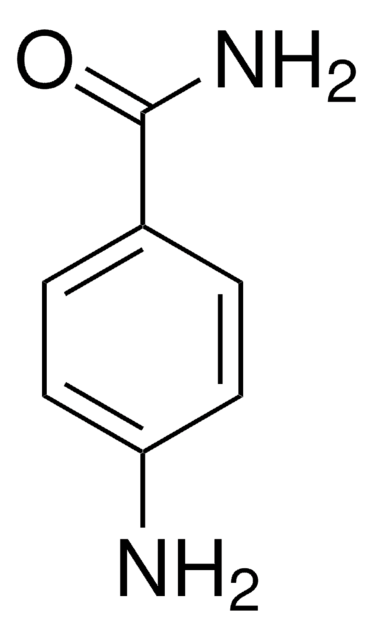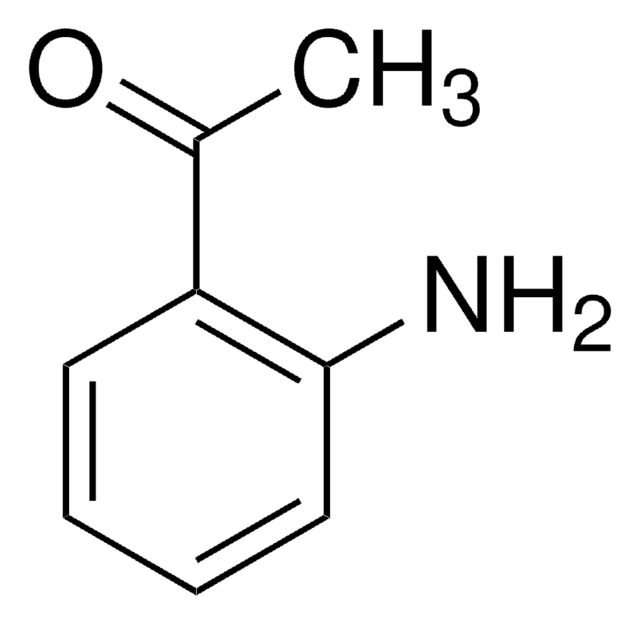A9628
2-Aminobenzaldehyde
≥98%
Synonyme(s) :
2-Formylaniline, Anthranilaldehyde, o-Aminobenzaldehyde
About This Item
Produits recommandés
Pureté
≥98%
Forme
powder
Conditions d'expédition
dry ice
Température de stockage
−20°C
Chaîne SMILES
Nc1ccccc1C=O
InChI
1S/C7H7NO/c8-7-4-2-1-3-6(7)5-9/h1-5H,8H2
Clé InChI
FXWFZIRWWNPPOV-UHFFFAOYSA-N
Vous recherchez des produits similaires ? Visite Guide de comparaison des produits
Application
- Preparation of quinoline derivatives as antiviral agents
- Preparation of electroluminescent materials for OLEDs
- Friedlander-type synthesis
- Preparation of 2-tosylaminophenyl cyclopropylmethanols for gold-catalyzed cyclopropyl carbinol rearrangement
- Benzyl C-H bond amination of arylmethylamines catalyzed by hydroxy-TEMPO
- Silver-catalyzed aniline mediated cascade hydroamination/cycloaddition reactions
Attention
Mention d'avertissement
Warning
Mentions de danger
Conseils de prudence
Classification des risques
Eye Irrit. 2 - Skin Irrit. 2 - STOT SE 3
Organes cibles
Respiratory system
Code de la classe de stockage
11 - Combustible Solids
Classe de danger pour l'eau (WGK)
WGK 3
Point d'éclair (°F)
235.4 °F - closed cup
Point d'éclair (°C)
113 °C - closed cup
Équipement de protection individuelle
dust mask type N95 (US), Eyeshields, Gloves
Faites votre choix parmi les versions les plus récentes :
Déjà en possession de ce produit ?
Retrouvez la documentation relative aux produits que vous avez récemment achetés dans la Bibliothèque de documents.
Notre équipe de scientifiques dispose d'une expérience dans tous les secteurs de la recherche, notamment en sciences de la vie, science des matériaux, synthèse chimique, chromatographie, analyse et dans de nombreux autres domaines..
Contacter notre Service technique